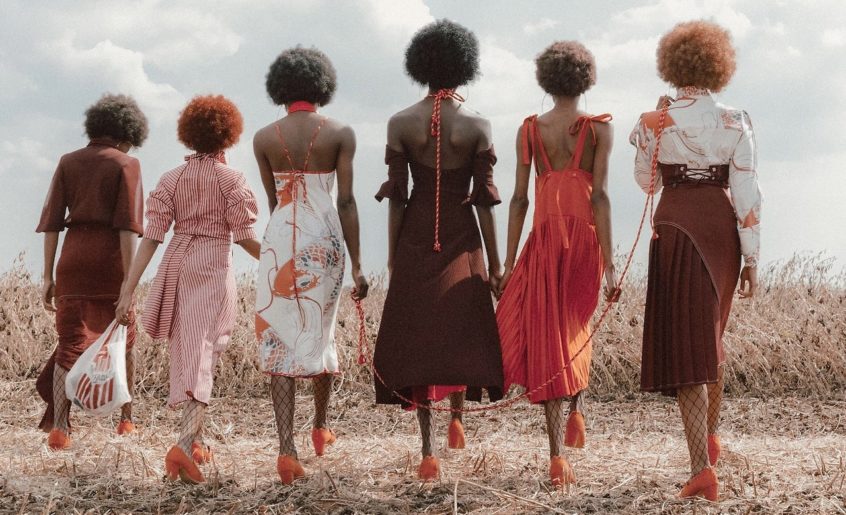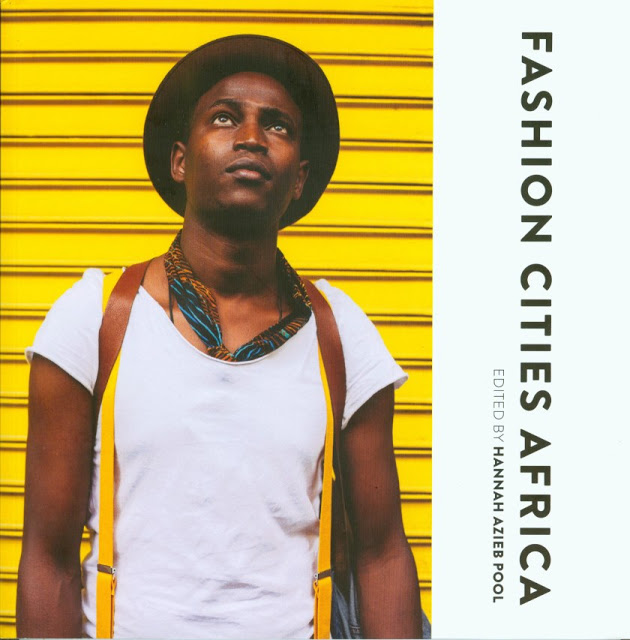What texts would a reader of South African fashion include?

I’ve been hard at work promoting African Catwalk across Italy and to a couple of universities abroad, in hopes of showing it to as many people as possible. I have been able to more or less schedule two or three screenings that will take place in the fall. So far, so good.
Paolo Pisacane (the director) and Gianmarco Altieri (screenwriter) did an excellent job capturing the challenges of doing fashion in South Africa and the lasting effects of apartheid and the economic crisis on the whole system. The fact that this is not simply a celebration of a brilliant, expanding creative sector, but a glimpse of a more complex reality, makes African Catwalk a useful resource for teachers of South African history, culture and fashion.
So with a view of including it in an ideal reader/syllabus on these topics, I thought it could be useful to compile a short list of texts that would accompany a screening of our documentary and aid discussion and further investigation of the history of South African fashion since the end of apartheid.
Here goes:
Bogatsu, M., 2002. “‘Loxion Kulcha’: Fashioning Black Youth Culture in Post-Apartheid South Africa”. English Studies in Africa, 45: 2, 1-11.
de Greef, Erica (2014). “Fashion as a site for memory: reflections on a fashion exhibition,‘Clive Rundle about Memory’.” International Journal of Fashion Studies 1: 2, 247-268.
___ (2018). “Tracing the Quiet Cultural Activism: Laduma Ngxokolo and Black Coffee”. In Pinther, Kerstin, and Alexandra Weigand, (eds), Flow of Forms/Forms of Flow: Design Histories between Africa and Europe. Vol. 37. transcript Verlag.
Farber, Leora (2010) .“Africanising hybridity? Toward an Afropolitan aesthetic in contemporary South African fashion design”. Critical Arts 24:1, 128-167.
___ (2015). “Hypersampling black masculinities, Jozi style”. Image & Text 26, 111-136.
Inggs, Alice. (2017) “The Suit Is Mine: Skhothane and the Aesthetic of the African Modern”. Critical Arts 31:3, 90-105.
Klopper, S. (2000). “Re-dressing the Past: the Africanisation of Sartorial Style in Contemporary South Africa”. In A. Brah and A.E. Coombes (eds.), Hybridity and its Discontents: Politics, Science and Culture. Routledge, 216-231.
Mokoena, Hlonipha (2017). “The Rickshaw Puller and the Zulu Policeman: Zulu Men, Work, and Clothing in Colonial Natal”. Critical Arts 31:3, 123-141.
Nettleton, Anitra (2017). “Dress and a Fashioned Identity among Black South African Migrant Miners in the Mid-Twentieth Century”. Critical Arts 31:3, 18-34.
Nuttall, Sarah (2008). “Stylizing the Self”. In Sarah Nuttall & Achille Mbembe (eds.), Johannesburg: The Elusive Metropolis. Duke University Press.
Pool, Hanna Azieb (2016). “Johannesburg”. In H. Azieb Pool (ed.), Fashion Cities Africa. Intellect, 109-137.

Rønde, J. (2004), The Swenkas, København: Cosmo Film [documentary]
Rovine, Victoria L. (2016) “Fashion Design in South Africa: Histories and Industries”. In V. Rovine, African Fashion, Global Style: Histories, Innovations, and Ideas you can Wear. Indiana University Press.
Vincent, Louise (2007). “Steve Biko and Stoned Cherrie: Refashioning the Body Politic in Democratic South Africa”. African Sociological Review, 11:2, 80-93.
What am I missing? Drop your suggestions in the comments.
*Cover image: Thebe Magugu, SS ’17